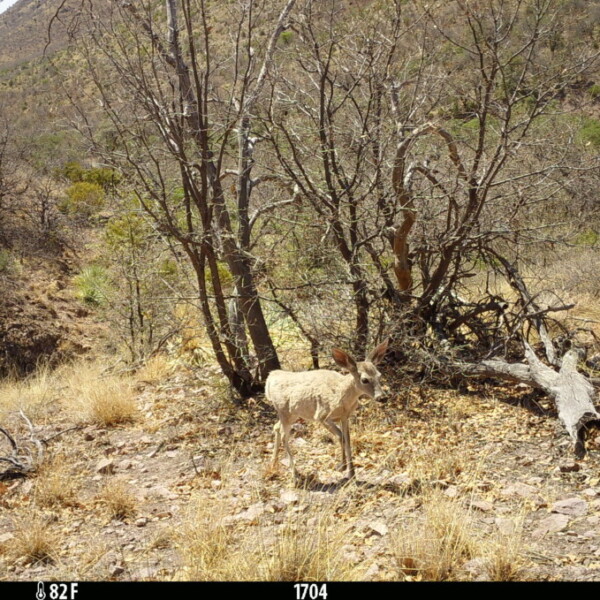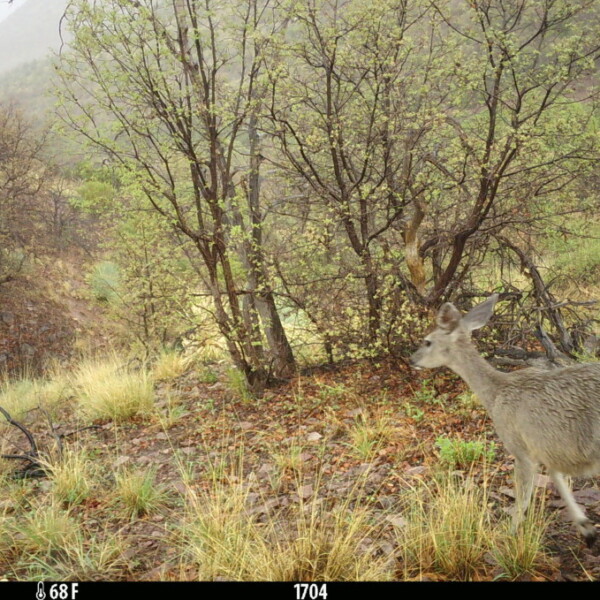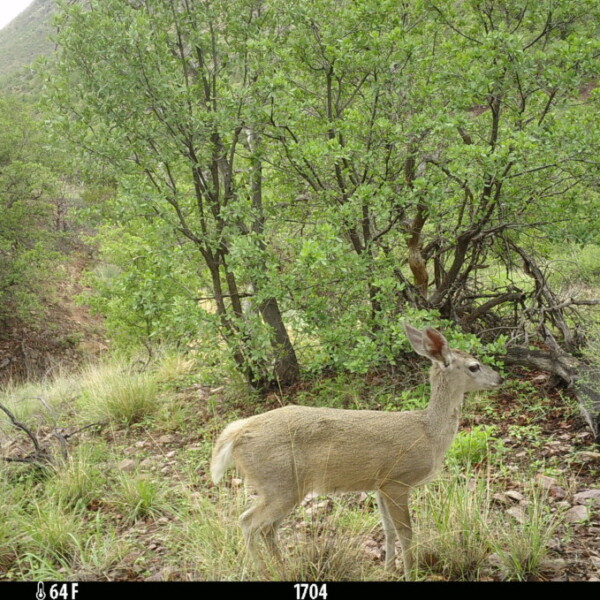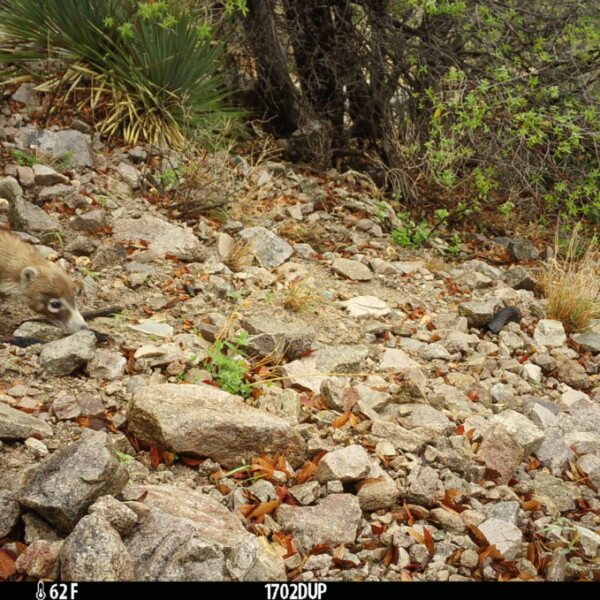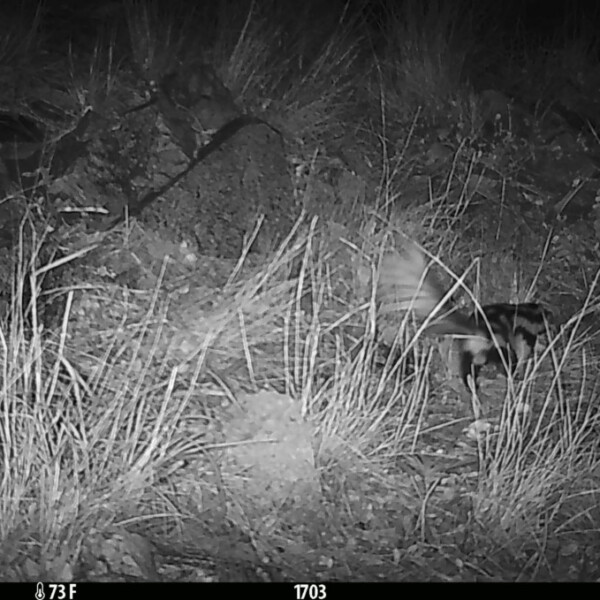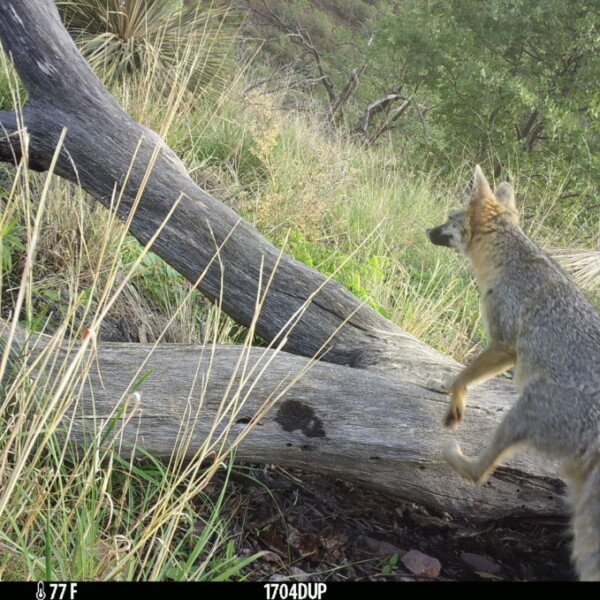A little over two months ago, Sky Island Alliance staff and intrepid volunteers extended our Border Wildlife Study east into the Coronado National Memorial in the Huachuca Mountains with Block 17.
When we placed these cameras, the region was dry as a bone. With all the drought-deciduous oaks leaves dropping their leaves and the grass dry as paper, this made for a bleak landscape, both in person and on our wildlife cameras.
Then, despite a year of extremes and unknowns, July left the Sky Island region with record rains. While the Border Wildlife Study didn’t beat Tucson’s record, the plants didn’t care. It was rain!
The first camera check to occur after these rains was at our new Block 17. And as the Wildlife Specialist who goes through these photos, I (Meagan) could almost see the plants rejoicing in the much-needed moisture. Grass grew, flowers emerged, and oaks exploded with new, lime-green leaves in less than 72 hours.
Three photos from the same Block 17 camera showing the Monsoon green up.
Of course, the wildlife was just as happy as the plants. Deer were frequently seen out in the rain, browsing the new growth.
Insects who rely on the moisture to breed and also rely on the flowering plants that come after were out on our cameras in plenty. The moths, beetles, robber-flies, and grasshoppers were frequently seen flying all around.

Beetle species flying through the air.
All the meso-carnivores (small- to medium-sized carnivores like skunks and foxes) were out in plenty, too. These smaller carnivores feast on the small animals like mice as well as insects themselves. The most common photos were a lone coati, several skunks, and many gray foxes.
Left to right: white-nosed coati, spotted skunk, gray fox.
And saving the best for last: we got our first baby bear of the Border Wildlife Study! Can you see it following its mom in the distance? Our very dry spring and summer months were tough on bears, so I hope these recent rains give this bear family much needed relief.

A young black bear follows its mother along the steep slopes of the Huachuca Mountains.
For only being out a short time, Block 17 has already giving us amazing insight on the wildlife of the region. With the first month dry and the second month wet, the juxtaposition has been awe-inspiring, and I can’t wait to see how the rest of the Border Wildlife Study looks before and after this monsoon.
Enjoy the rains, and watch out for baby toads!

